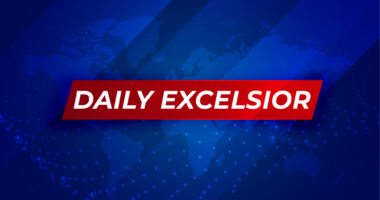Share to Facebook Share to Twitter Share to Linkedin Tammy Hawes is CEO and Founder of Virsys12, a Salesforce Consulting and Appexchange Partner focused on healthcare technology transformation. getty In today’s healthcare landscape, efficient data exchange is crucial. However, the industry struggles with siloed data—information isolated within different departments, systems or organizations—hindering collaboration and optimal patient care. Historically, healthcare organizations have used disparate systems, which mergers have complicated further. Often, IT departments choose to keep systems separate, leading to fragmented data. The lack of interoperability standards and reluctance to share data exacerbate the issue, scattering healthcare data across multiple platforms and impeding efficiency. One critical consequence is the problem of siloed provider directory data. Provider directories, essential for patients to identify in-network providers and estimate care costs, are plagued by inconsistencies and outdated information. This lack of synchronization across platforms results in surprise medical bills when patients unknowingly receive care from out-of-network providers. It also prevents healthcare organizations from providing accurate cost estimates, leaving patients unaware of the financial implications of their choices. The Consequences Of Surprise Billing Surprise billing occurs when patients receive unexpected charges for medical services, often because they unknowingly received care from out-of-network providers. This problem is exacerbated by siloed provider directory data, which makes it difficult for patients to determine the network status of their healthcare providers. Surprise bills can cause significant financial strain, leading to medical debt and eroding trust in the healthcare system. The lack of pricing transparency and the fear of surprise bills can also deter patients from seeking necessary medical care, leading to adverse health outcomes. MORE FOR YOU Does Inside Out 2 Have An End Credits Scene NYT Strands Hints Spangram And Answers For Friday June 14 Connor McGregor s Return Fight Canceled Over Injury Meaning Pereira Vs Prochazka Will Headline UFC 303 The Need For Unified Provider Directory Data To improve pricing transparency and address surprise billing, healthcare organizations must unify provider directory data. Establishing a centralized, up-to-date and accurate provider directory allows patients to identify in-network providers and make informed decisions. This requires breaking down data silos and implementing robust data governance processes. Initiatives such as Fast Healthcare Interoperability Resources (FHIR) and the Trusted Exchange Framework and Common Agreement (TEFCA) aim to establish a common language and framework for data exchange. By adhering to these standards, healthcare organizations can facilitate the seamless flow of information across systems and entities. Fostering a culture of collaboration and data sharing is essential. Healthcare organizations should value data sharing for better patient care and population health. Secure and transparent data-sharing agreements, coupled with proper governance and privacy measures, can build trust and encourage collaboration. The Role Of Technology Technology plays a crucial role in breaking down data silos. The advent of artificial intelligence (AI) to constantly monitor updated provider data and cloud-based platforms to provide a centralized repository for data storage and exchange can enable real-time access to up-to-date information. AI algorithms can help integrate and analyze vast amounts of data from various sources, providing insights into differences in data sources and ensuring data integrity to foster trust in data sharing. Implementing Enterprise Solutions To successfully implement enterprise solutions and establish a single source of truth for provider data, healthcare organizations should consider prioritizing the following. • Implement provider data management systems (PDM) that adhere to interoperability standards: Using standards like FHIR for provider data ensures seamless data exchange and integration across systems and organizations. • Automate provider data management grooming: Real-time data integration, rather than nightly batch processes, improves accuracy. • Implement data governance and security: Robust policies maintain data integrity, ensuring only authorized updates. This is critical for downstream effects to claims, contracting, credentialing and provider directory information. • Support change management and user adoption: Effective strategies and training are crucial to ensure the successful adoption of enterprise provider data management solutions, including provider onboarding, credentialing and contracting. Engaging stakeholders, addressing their concerns and providing ongoing support can facilitate a smooth transition to the new system. The Role Of Government Law Updated laws governing provider data are necessary for technology implementation. Current legislation mandates adherence to the National Plan and Provider Enumeration System (NPPES) as the authoritative source. This penalizes health plans for inaccuracies beyond their control, ultimately impacting patients. While NPPES aims to maintain a centralized database, its data can be outdated or inaccurate. Reliance on NPPES as the source of truth has its limitations and challenges. • Data accuracy: Despite the legal requirement for healthcare providers to maintain accurate information in NPPES, the reality is that the data can often be incorrect or outdated. Providers may fail to update their information in a timely manner, leading to discrepancies between NPPES and other provider directories. • Lack of real-time updates: NPPES data is not updated in real time, which means that changes made by healthcare providers may not be immediately reflected in the system. This delay can lead to temporary inconsistencies and inaccuracies in provider directory data. • Limited Data Elements: NPPES primarily contains basic provider information such as name, address and specialty. It may not capture more detailed data elements that are relevant for provider directories such as hospital affiliations, languages spoken or appointment availability. To address these limitations, healthcare organizations often supplement NPPES data with additional sources such as direct outreach to providers, claims data analysis and data validation processes. While NPPES remains the legal source of truth, organizations recognize the need for a multifaceted approach to ensure the accuracy and completeness of their provider directories. Conclusion The epidemic of siloed data in healthcare demands a paradigm shift toward enterprise solutions that enable a single source of truth. Siloed provider directory data has contributed to the lack of pricing transparency and the prevalence of surprise billing in healthcare. By unifying provider directory data and utilizing AI to constantly monitor for changes to provider data, healthcare organizations can begin to combat surprise billing and create a more transparent and equitable healthcare system. As we strive to improve the patient experience and build trust in healthcare, addressing the challenges posed by siloed provider directory data is a critical step forward. Forbes Technology Council is an invitation-only community for world-class CIOs, CTOs and technology executives. Do I qualify? Follow me on Twitter or LinkedIn. Check out my website. Tammy Hawes Editorial Standards Print Reprints & Permissions
Subscribe
Login
0 Comments





